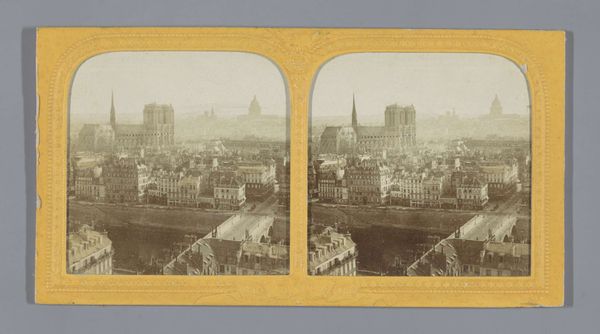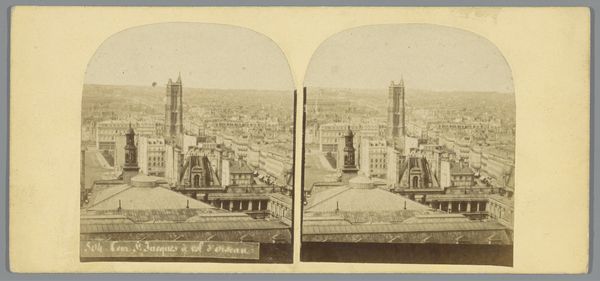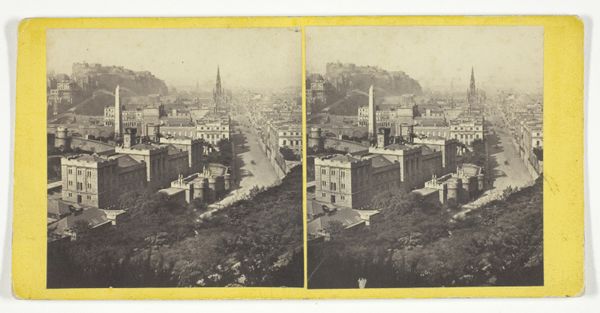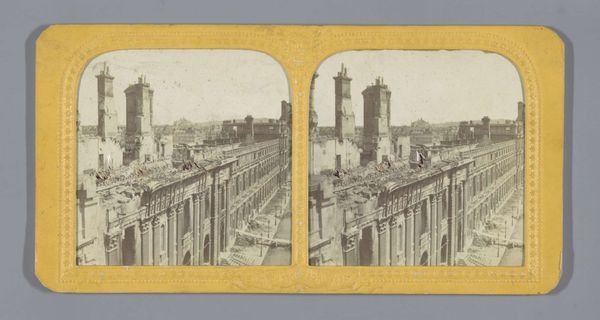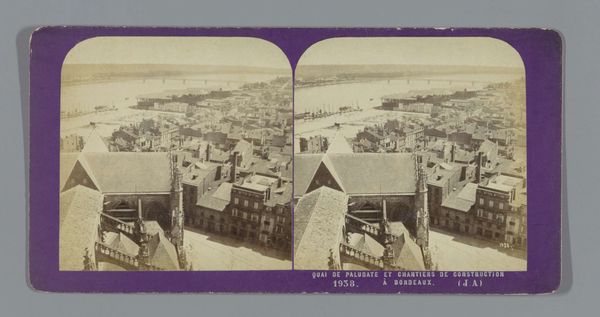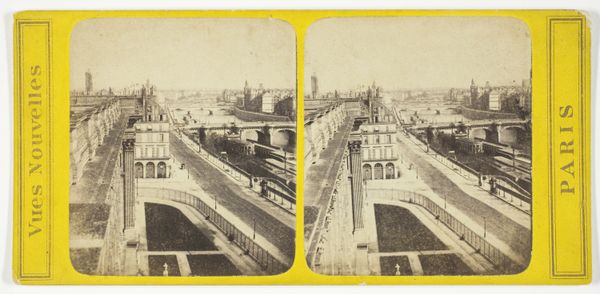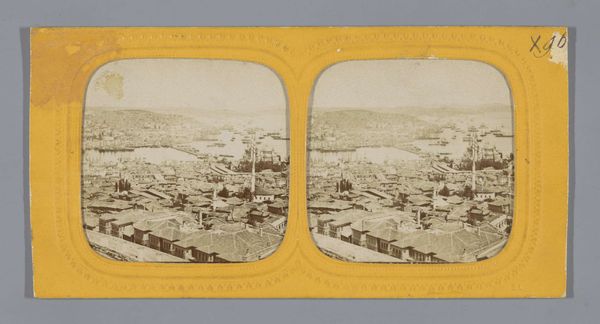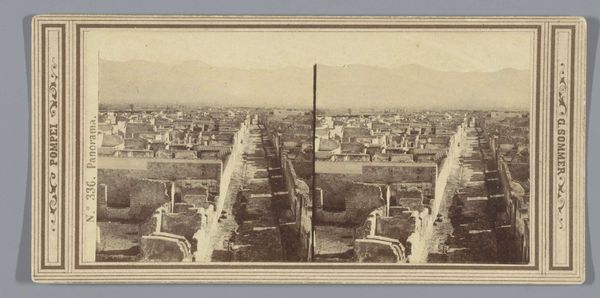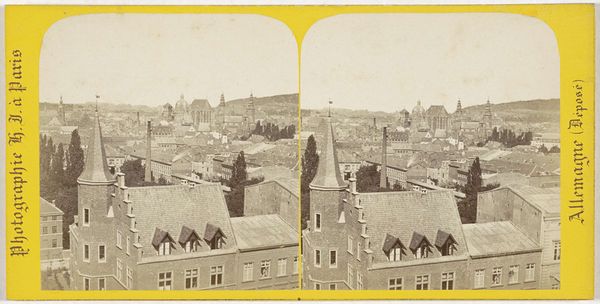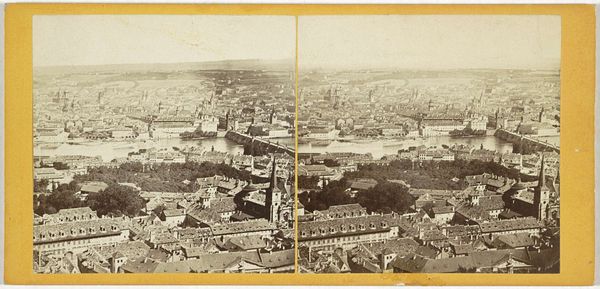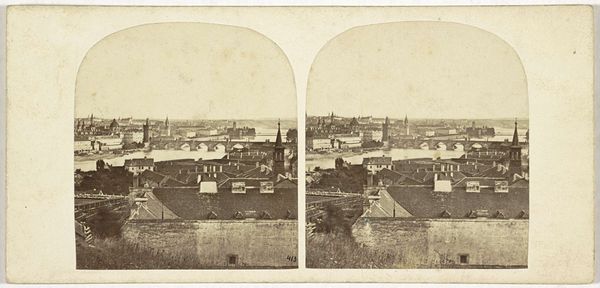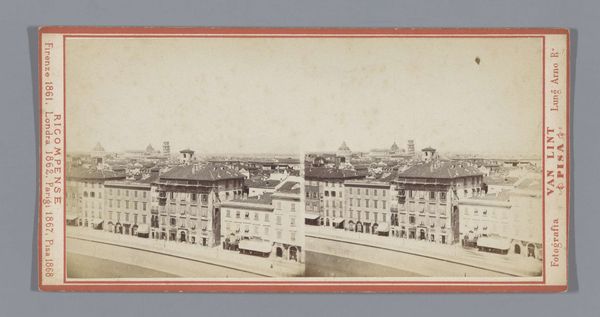
print, photography, gelatin-silver-print
# print
#
photography
#
gelatin-silver-print
#
cityscape
#
watercolor
#
realism
Dimensions: height 88 mm, width 170 mm
Copyright: Rijks Museum: Open Domain
Curator: This is Charles Dauvois' "View of Paris with the Church of Saint-Eustache," a gelatin silver print, made sometime between 1863 and 1880. Editor: My immediate impression is one of texture, really – a dense fabric woven from the roofs and facades. It is incredibly compact; the buildings seem to breathe into each other. Curator: Precisely! The stereoscopic format invites a deeper analysis. Notice how the church serves as a compositional anchor, providing visual stability amid the urban sprawl. The geometric precision of the buildings creates this sense of order. Editor: I'm also struck by how this medium, this process of the gelatin silver print, democratized this view of the city. The relatively new ability to mass-produce images put Parisian life within reach for people far beyond the capital, didn't it? One wonders what working conditions looked like. What chemicals were those early photographers handling? How long did each print take to finalize, considering all steps? Curator: Excellent considerations. Photography, and its materiality, also transformed painting, did it not? It forced a reevaluation of representation and artistic vision; for example, one could argue the play of light in impressionism responds to these early photos. Editor: Absolutely. We tend to think about the "subject" of photographs, but thinking of the photographers and lab assistants creating these en masse adds a really valuable texture to what's in the print, its composition. Their invisible labor literally developed what we see before us! Curator: It reveals how the seemingly objective representation relies on the artist's intentional construction, guiding our gaze towards symbolic elements of cultural and architectural significance. Editor: Thank you for highlighting the complexities and material realities hidden within what at first seems a straightforward image of a familiar city. It opens up all sorts of avenues of reflection, doesn't it? Curator: Indeed. Hopefully, the artwork inspires all of us to question and appreciate the multiple layers of history captured within seemingly simple art.
Comments
No comments
Be the first to comment and join the conversation on the ultimate creative platform.
